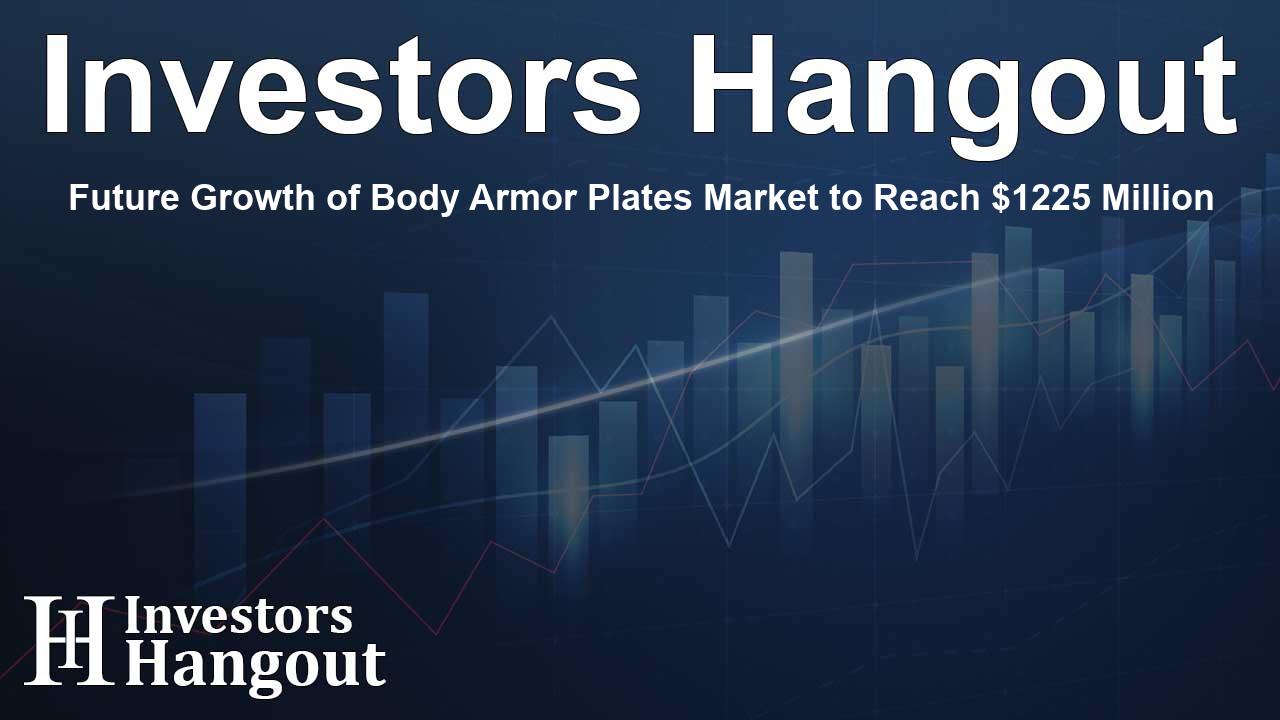Future Growth of Body Armor Plates Market to Reach $1225 Million

Exciting Developments in the Body Armor Plates Market
The body armor plates market has been witnessing significant growth recently, with projections indicating an increase in value from US$962.4 million in the previous year to an impressive US$1225 million by 2031. This represents a compound annual growth rate (CAGR) of 3.5% over the forecast period. Such growth reflects the increasing demand for advanced protective gear worldwide, driven by escalating security concerns.
Market Insights and Key Statistics
According to a recent report by Stratview Research, the global landscape of body armor plates is evolving rapidly. Some notable statistics include:
- Market size expected to reach US$1225 million by 2031.
- Growth opportunity for cumulative sales pegged at US$8.78 billion from 2024 to 2031.
- Dominant product type anticipated to be ICW (In-Conjunction-With) armor plates, which provide superior protection when used in conjunction with soft armor layers.
Leading types of body armor offerings now include Level IV and Level IIIA/Level II plates, providing users with a stronger defense mechanism against ballistic threats. Ceramics remain the primary material choice for manufacturers due to their blend of weight, strength, and cost-effectiveness.
Product and Protection Categories
Understanding Product Segments
Within the body armor plates market, two main categories have emerged: standalone armor plates and ICW armor plates. ICW plates are increasingly popular due to their flexibility and multi-hit protection capabilities. These plates are designed to work seamlessly with softer armor materials such as Kevlar, providing a balanced approach to defense against various threats.
Levels of Protection
Various protection levels are available to cater to different user needs. Among these, Level IV + Level IIIA/Level II plates are expected to dominate due to their unparalleled protection against high-caliber rounds, making them essential for military and law enforcement personnel engaged in high-threat environments. The demand for these protective solutions is driven by the rise in urban warfare and active shooter incidents.
Material Innovations and Trends
The body armor plates market continues to benefit from advancements in materials science. Ceramic remains the material of choice due to its impressive performance characteristics. Compared to alternatives like ultra-high-molecular-weight polyethylene (UHMWPE), ceramics combine lightweight features with robust protection, making them a staple in modern body armor manufacturing.
Market Dynamics and Drivers
Several key drivers are propelling the body armor plates market forward:
- Escalating global security threats have intensified the need for effective ballistic protection.
- Rising defense budgets and increased demand from military and law enforcement sectors are fuelling growth.
- Technological advancements have led to the creation of lighter, more efficient ballistic materials.
Regional Market Insights
The North American region is set to maintain its dominance in the body armor plates market, primarily driven by significant investments from government defense agencies. Furthermore, Asia-Pacific (APAC) is emerging as the fastest-growing market due to rising defense budgets and heightened security needs in countries like China and India. This expansive growth offers numerous opportunities for companies within the sector.
Competitive Landscape
The body armor plates market is characterized by a competitive landscape with numerous players vying for market share. Some of the key companies leading this industry include:
- Point Blank Enterprises, Inc.
- Cadre Holdings
- Craig International Ballistics Pty. Ltd
- Xtek
- US Armor Corporation
- Mars Armor
- TYR Tactical
- Beijing Tongyizhong New Material Technology Corporation
- Hardwire LLC
- Hesco
Frequently Asked Questions
What is driving the growth of the body armor plates market?
The growth is primarily driven by increasing global security threats, defense expenditures, and technological advancements in personal protection.
Which materials are commonly used in body armor plates?
Common materials include ceramic, ultra-high-molecular-weight polyethylene (UHMWPE), and aramid, with ceramic being the most widely used.
What type of body armor offers the highest level of protection?
Level IV + Level IIIA/Level II body armor plates are known for offering the highest level of protection against ballistic threats.
How is the competitive landscape of the body armor plates market structured?
The market comprises a variety of players, with major companies competing based on price, service offerings, and regional presence.
Which regions are witnessing the most growth in the body armor plates market?
North America is expected to dominate, while Asia-Pacific is poised to experience the fastest growth due to rising defense budgets and security concerns.
About The Author
Contact Addison Perry privately here. Or send an email with ATTN: Addison Perry as the subject to contact@investorshangout.com.
About Investors Hangout
Investors Hangout is a leading online stock forum for financial discussion and learning, offering a wide range of free tools and resources. It draws in traders of all levels, who exchange market knowledge, investigate trading tactics, and keep an eye on industry developments in real time. Featuring financial articles, stock message boards, quotes, charts, company profiles, and live news updates. Through cooperative learning and a wealth of informational resources, it helps users from novices creating their first portfolios to experts honing their techniques. Join Investors Hangout today: https://investorshangout.com/
The content of this article is based on factual, publicly available information and does not represent legal, financial, or investment advice. Investors Hangout does not offer financial advice, and the author is not a licensed financial advisor. Consult a qualified advisor before making any financial or investment decisions based on this article. This article should not be considered advice to purchase, sell, or hold any securities or other investments. If any of the material provided here is inaccurate, please contact us for corrections.
